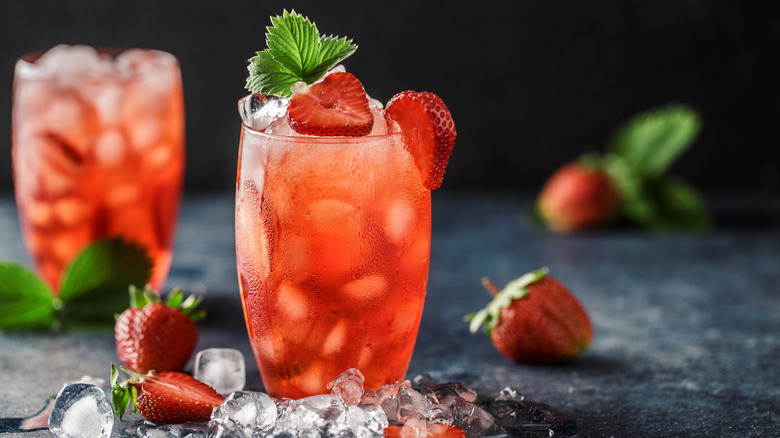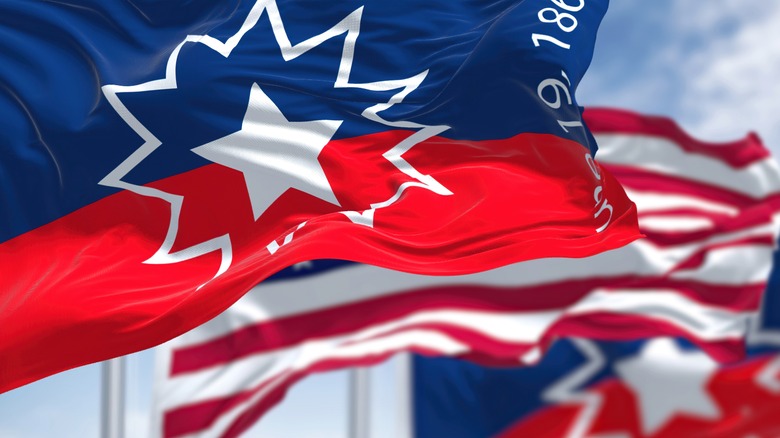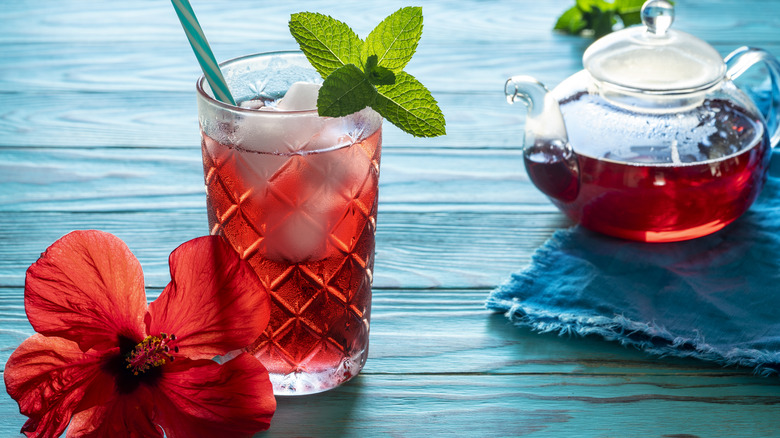Why You Should Be Sipping Strawberry Soda On Juneteenth
On June 19, 1865, more than two years after President Abraham Lincoln's Emancipation Proclamation freed enslaved people in the Confederate states, the Union Army arrived in Galveston, Texas. It was only then that the enslaved people learned that they were free. In the ensuing years, what began as a local celebration and day of remembrance by the Black community — known as Juneteenth, Jubilee Day, or Emancipation Day — began to spread across the country. In 2021, President Joseph Biden signed legislation making it a national holiday.
Among the various traditions associated with Juneteenth, food plays a central role with red being the dominant color. Beef hot links dyed red, summer fruits like strawberries and watermelon, and red-hued desserts all loom large. But strawberry soda has a special significance on this day for many celebrants. Journalist James E. Causey recalled his grandfather from Mississippi telling him that enslaved people would sometimes "sneak strawberries" from the fields where they were forced to work. "Once the enslaved were freed, they celebrated by drinking red drinks and eating red foods such as strawberries," Causey wrote in the Milwaukee Journal Sentinel.
The significance of the color red for Juneteenth
The significance of strawberry soda and other red-hued foods and beverages has traditionally been associated with the blood shed by enslaved people during their 400 years of subjugation in America, but there may be even deeper roots. According to food historian Michael Twitty, for the enslaved Yoruba and Kongo people from West Africa who were brought to Texas by their captors in the 1800s, the color red had special significance. "For both of these cultures the color red is the embodiment of spiritual power and transformation," Twitty wrote on his website Afroculinaria.
The pervasiveness of crimson-colored food for Juneteenth also extends to barbecue drenched in red sauce and red velvet cake. If you're celebrating Juneteenth by baking your own red velvet cake, a few simple substitutions like unsweetened cocoa powder and buttermilk can take it to the next level. Besides the color red, many Juneteenth observances include foods that celebrate prosperity, like black eyed peas, which signify wealth, and cornbread, representing gold.
From hibiscus to soda
In addition to red foods, the Yoruba and Kongo people may also be responsible for the popularity of red-hued drinks for Juneteenth. "Before and after European contact, West Africans welcomed and entertained their household guests with red-colored beverages — more accurately described as teas — made from hibiscus flower petals or kola nuts, which are indigenous to that part of Africa," author and food historian Adrian Miller wrote in Food & Wine. These traditional drinks came to America with the enslaved people who created them.
Over the years, other red-colored drinks became more prevalent, including a concoction made from water and molasses known as red lemonade, which got its coloring from pureed fruit or dye. Big Red, a cream soda from Texas that's been around since 1937, also became popular — and, as the name suggests, is bright red and flavored with lemon and orange oils. But for some folks, like James E. Causey, whose grandfather toasted with strawberry soda every Juneteenth, the holiday wouldn't be the same without this signature soft drink.


